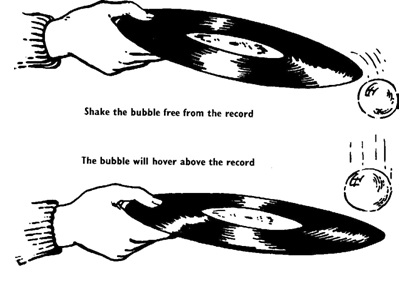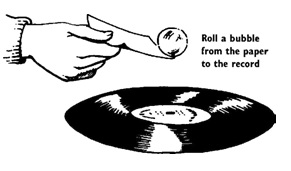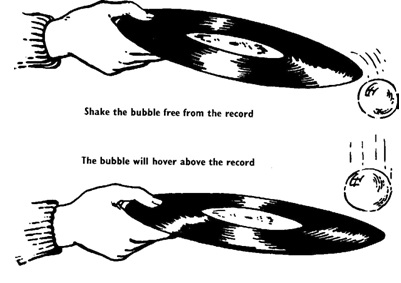Chapter: SCIENCE EXPERIMENTS & AMUSEMENTS FOR CHILDREN BY CHARLES VIVIAN. Simple Technical Steped Practical Projects for school and college students.
Electrifying a Bubble

Electrifying a Bubble


The bubbles for this
experiment have a longer life than those usually obtained from ordinary soap
solution. The addition of glycerin to soapy water should provide a mixture that
will prove ideal for the purpose. If you are unable to get a bubble-pipe, a
loop of wire will serve as well.
Take a length of fairly
thick wire (hairpin thickness) and bend it into the loop shape shown in the
diagram.
Dip the wire loop into the soap and glycerin
solution so that a film of liquid forms across the wire when it is removed.
Either blow gently into this film or else give the wire a sharp flick in
the air to form bubbles.
When you
are satisfied with the bubbles you can produce, switch to a second operation:
Rub an old phonograph record with a piece of fur or flannel. This is best done
in a warm, dry room. Rub the record briskly for a minute or two.

Now, without any loss of
time, blow a bubble, catch it on a piece of paper, and then gently roll it onto
the phonograph record. A friend can help by blowing a bubble while you are
rubbing the record.
Allow the bubble to rest on
the record for a few seconds and then gently shake the bubble free. As it
falls, lower the record so that it is immediately below the bubble. As the
bubble nears the record it will slow in speed until it hovers over it. By
careful manipulation of the record, you can keep the bubble in this hovering
position either until it bursts or until some wayward current of air blows it
aside.
In rubbing the phonograph
record you produced an electrical charge which was imparted to the bubble when
it rested on the record. As both the record and the bubble were in this way
given like charges of electricity, they began to repel each other when the
bubble was shaken off.
Related Topics